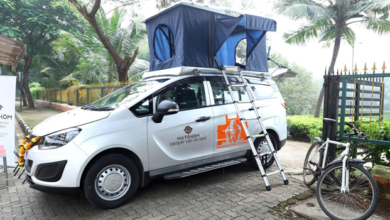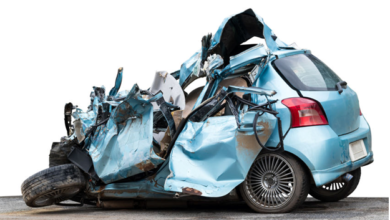5 Vital Things to Know Before Driving in the Rain

The rainy season is probably the worst time to drive.
Sure, sitting inside your car when it’s pouring like crazy is super convenient. But it’s not so pretty when you have to drive through mud, giant water puddles, and slippery roads.
Remember, thousands of accidents occur every year as a result of rainfall. There are just many challenges drivers face during the rainy days, such as:
- Wet pavements
- Storms
- Flash floods
- Landslides and mudslides
The thing is, no matter how much you avoid it, you’ll find yourself driving in the rain at some point.
As such, it’s best if you equip yourself to deal with the reduced visibility, increased noises, and difficulty in maneuvering your vehicle.
This post highlights crucial things you must be aware of before driving in the rain.
1. Consider Your Gut Feeling
Is your gut telling you it’s going to be a terrible downpour?
You probably shouldn’t ignore it.
Wait out till the weather improves before starting your journey. It’s better to postpone your trip than get trapped or risk your life in flash floods.
Note that heavy downpours are dangerous and result in flash floods, which can cause great damage, injury, and even loss of life.
2. You Need a Car in Good Condition
Before driving in the rain, how good is your car?
The rainy conditions come with their challenges. There is no need to let the vehicle add to the problem.
For example, heavy downpours significantly reduce visibility, so your car windshield and windows should not make this worse. Having clean windshields and working wipers is mandatory before you even think of driving in the rain.
You should also check both the head and tail lights and hazard signals as they come in handy in communicating with other drivers and seeing the road.
Remember that driving without working lights, and windshield wipers is an offense for a reason, and that is it’s plain risky.
Make sure you also check your vehicle wheels, as balding tires increase the risk of hydroplaning on wet roads.
3. Your Route Matters
It’s important to be always familiar with the route you will take when the weather is tricky.
Your route can expose you to extreme or limited challenges after it rains. Some roads are not highly compressed, meaning they can look dry after a downpour but are actually slippery.
You should also beware of flood-prone areas such as ditches, low-lying roads, and underpasses. If you are new to an area, make sure your GPS navigation works to avoid getting lost or driving on dangerous roads.
4. Beware of Hydroplaning
Hydroplaning occurs when the roads are wet and slippery, making your tires skid and lose control.
Note that your car can hydroplane even if it’s drizzling. So long as the roads are wet, your vehicle is at risk of skidding. The situation can be worse when your tires are worn out.
Hydroplaning is a common experience when driving on a wet, slippery surface. You want to stay calm, beware of other drivers, and ease up on the gas.
5.Arrive Late but Safe
Driving when it rains is a lot different from when conditions are dry.
You need to prioritize safety rather than rush and get in trouble. Drive slowly because your vehicle’s reaction time is affected by the wet conditions.
Try not to tailgate since its danger is increased with the rain. It’s advisable to keep at least three times the normal distance between you and the next driver. The distance gives you and the other driver enough room to work with if something goes wrong.
Besides, you don’t want to deal with the legal consequences of ramming into others on the road. If things do go wrong, reaching out to your car accident attorney would be a great idea.
Conclusion
Driving in the rain is tricky and can be dangerous if you haven’t taken the necessary steps to stay safe. We have highlighted a few tips that will come in handy when deciding whether or not to drive and how to remain safe while at it.
It’s important to exercise caution and avoid risky areas and conditions whenever you can. However, if you find yourself in a tight spot, turn around or call 911 for help.
Visit for more articles: bestpost.org



